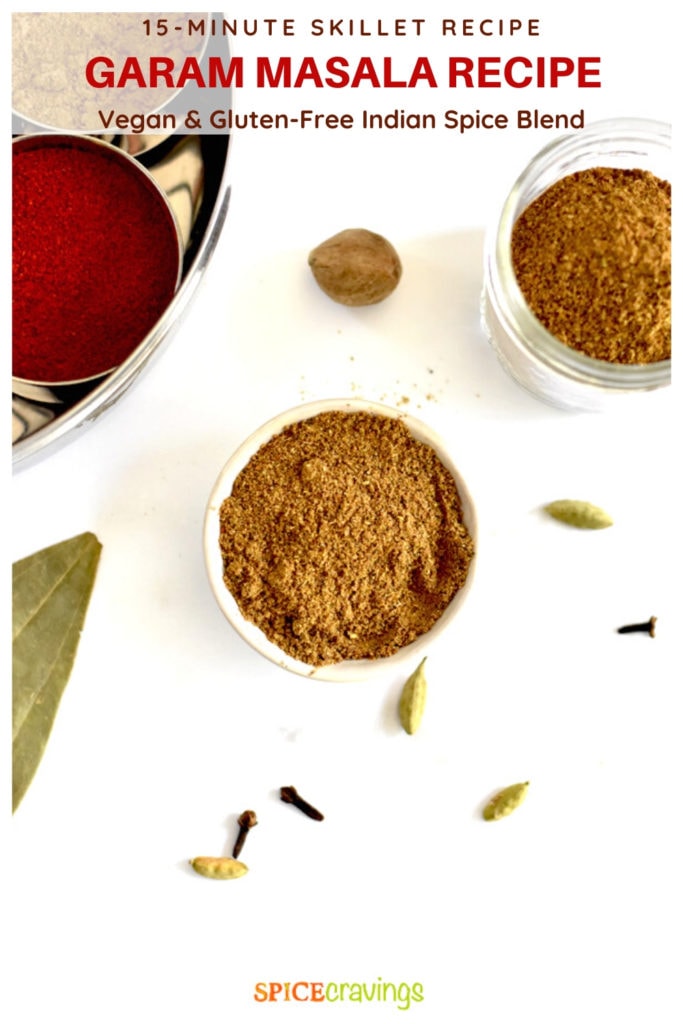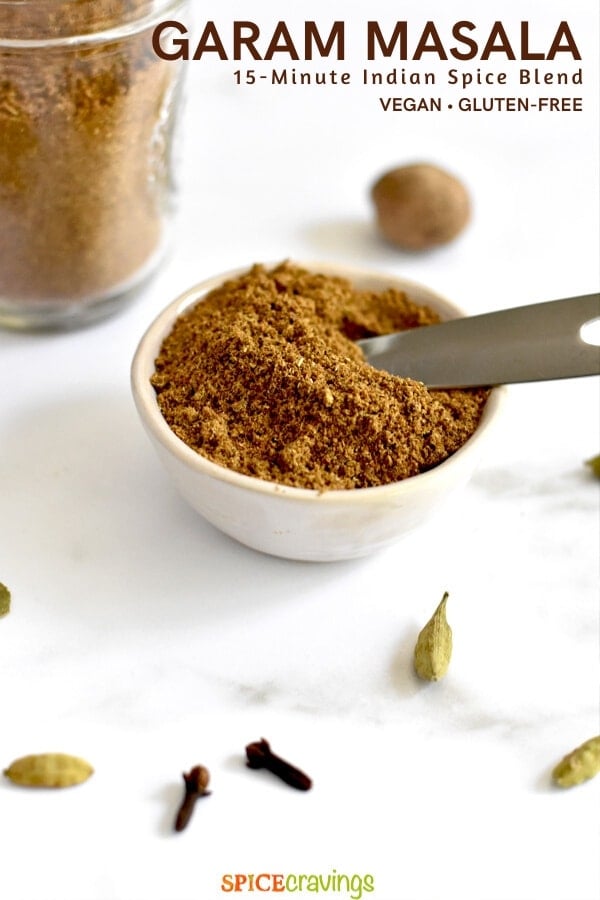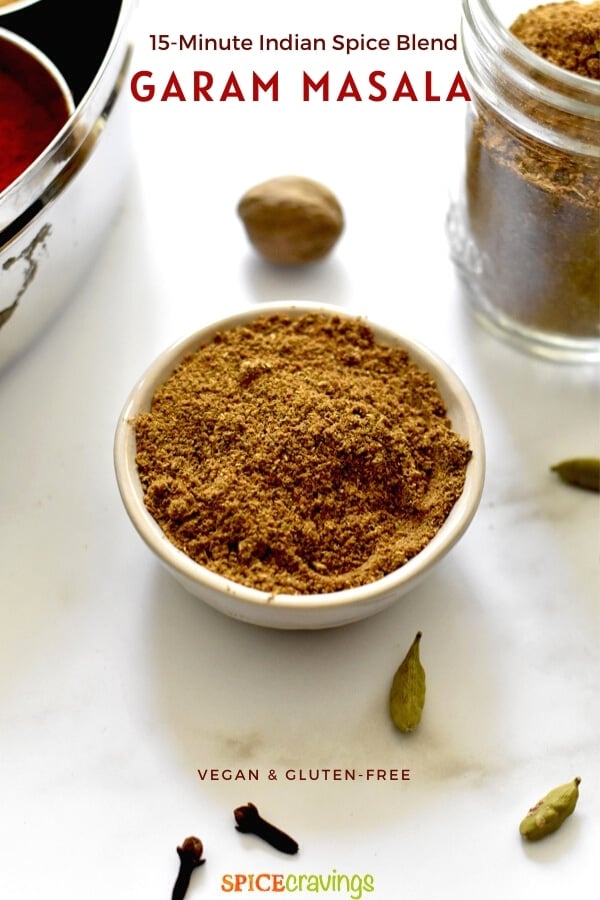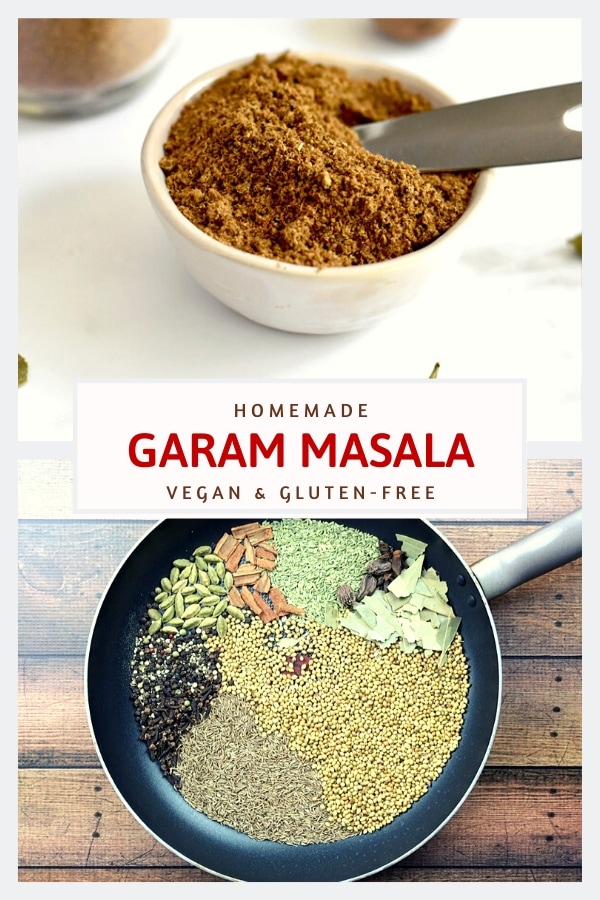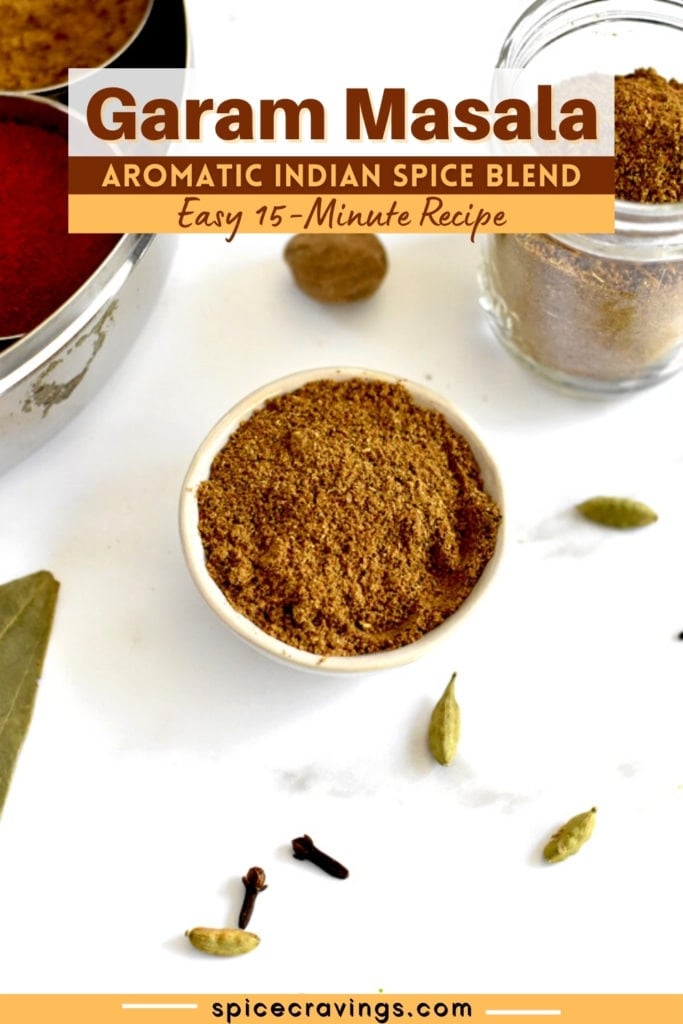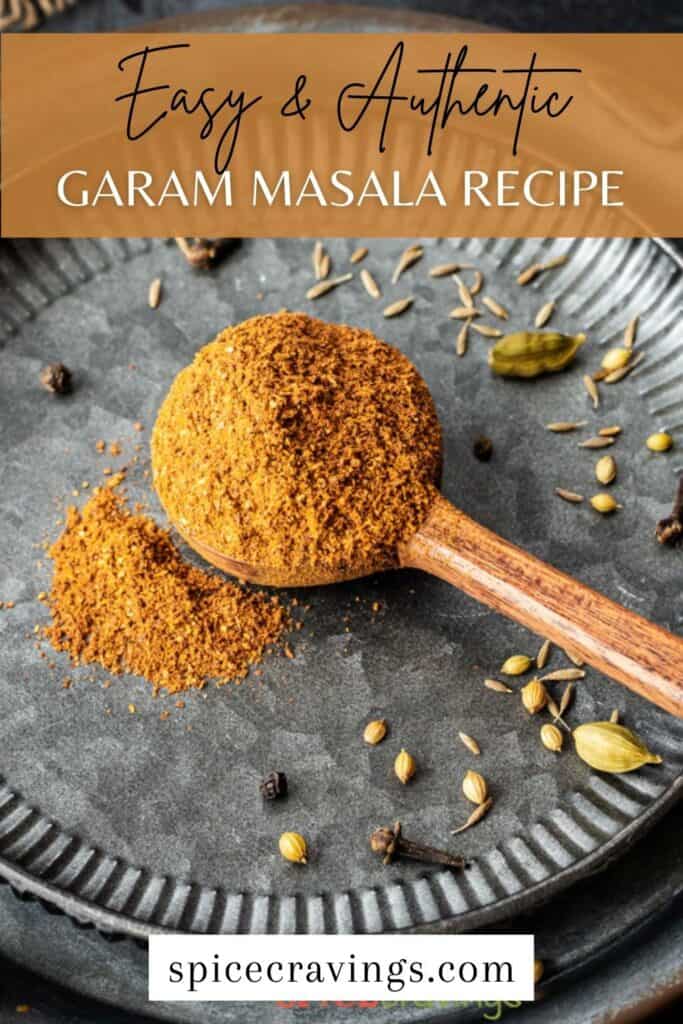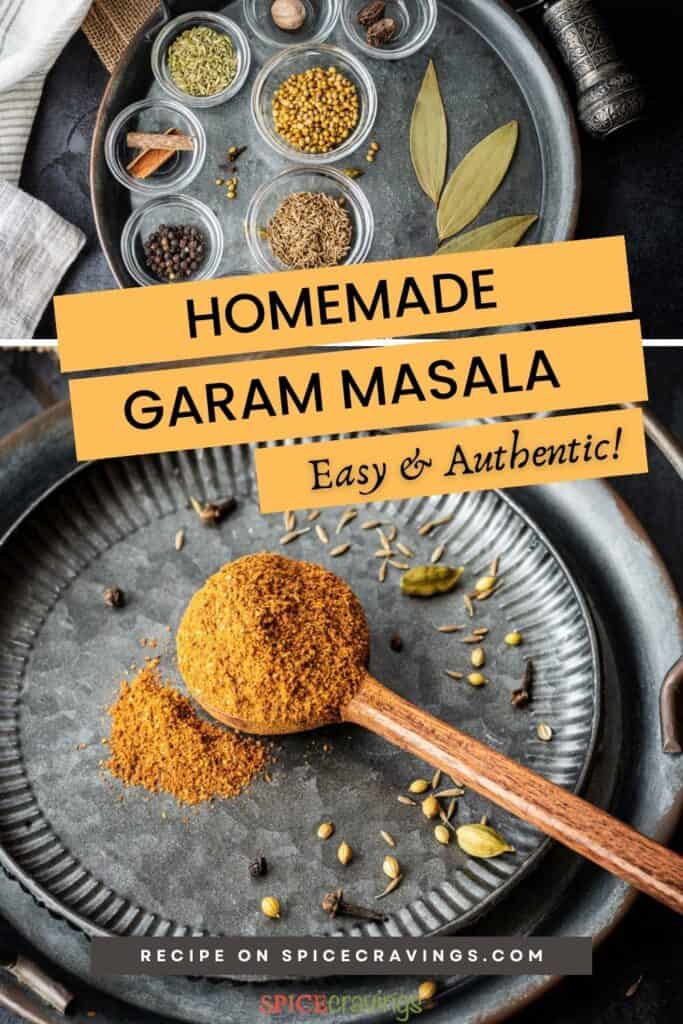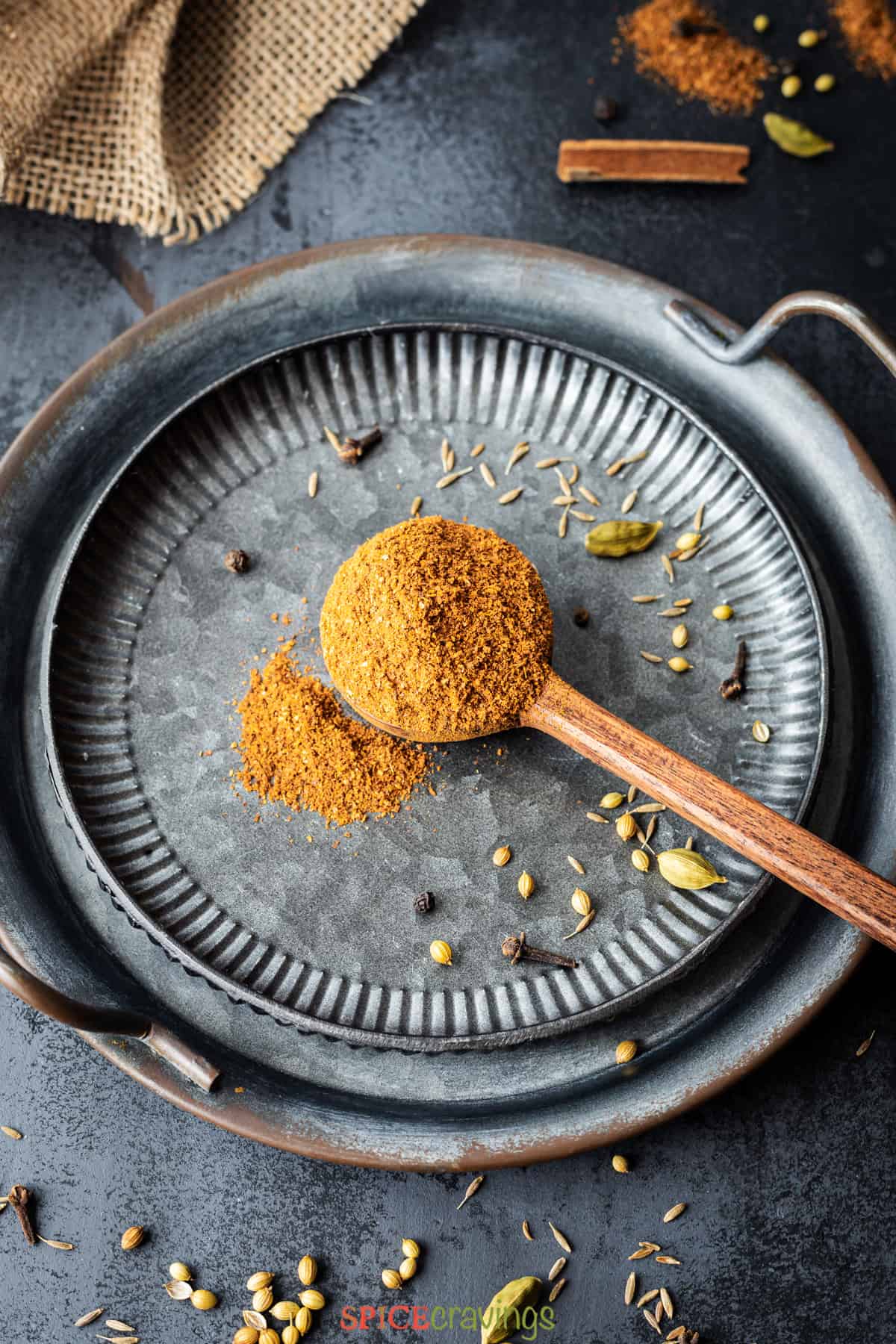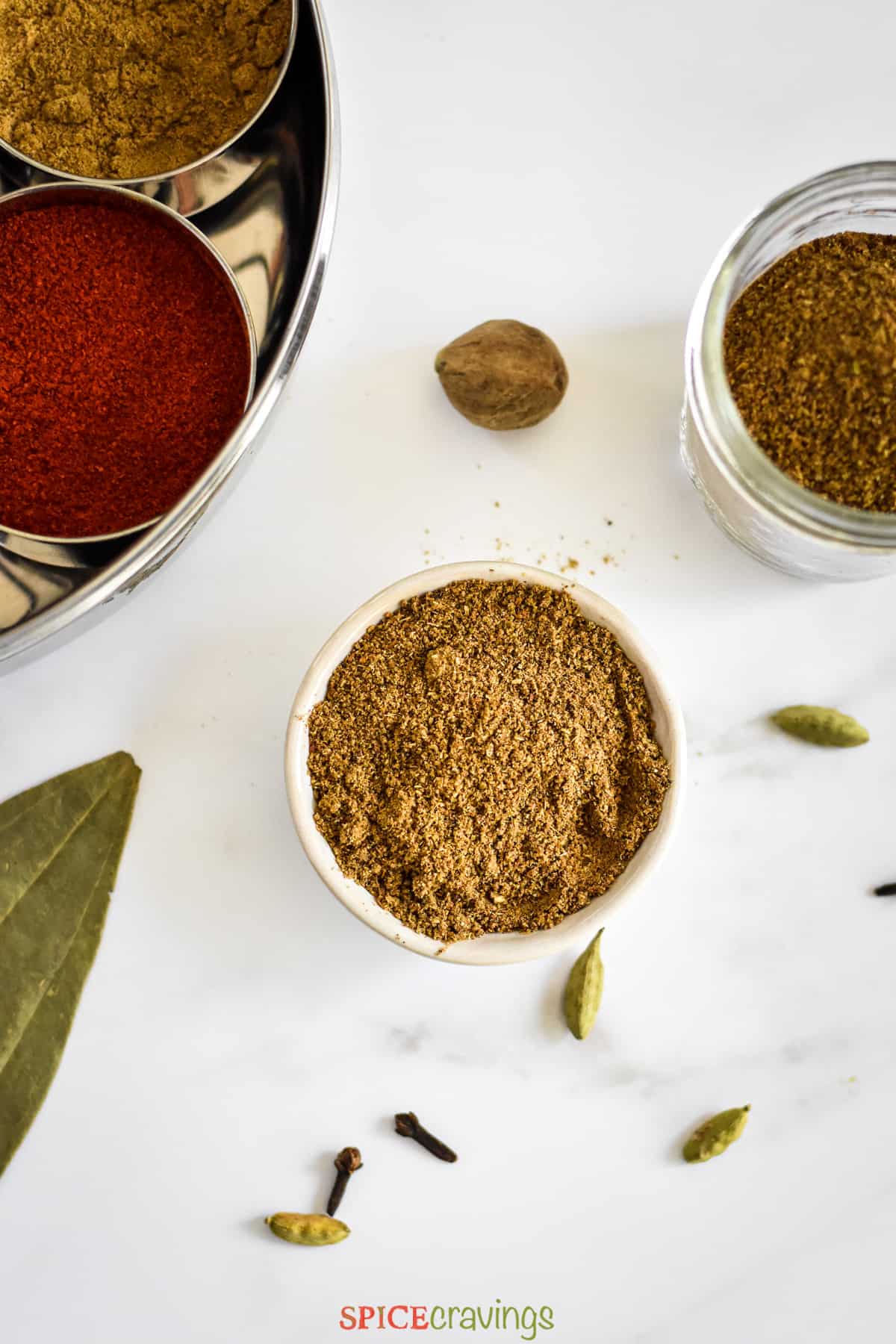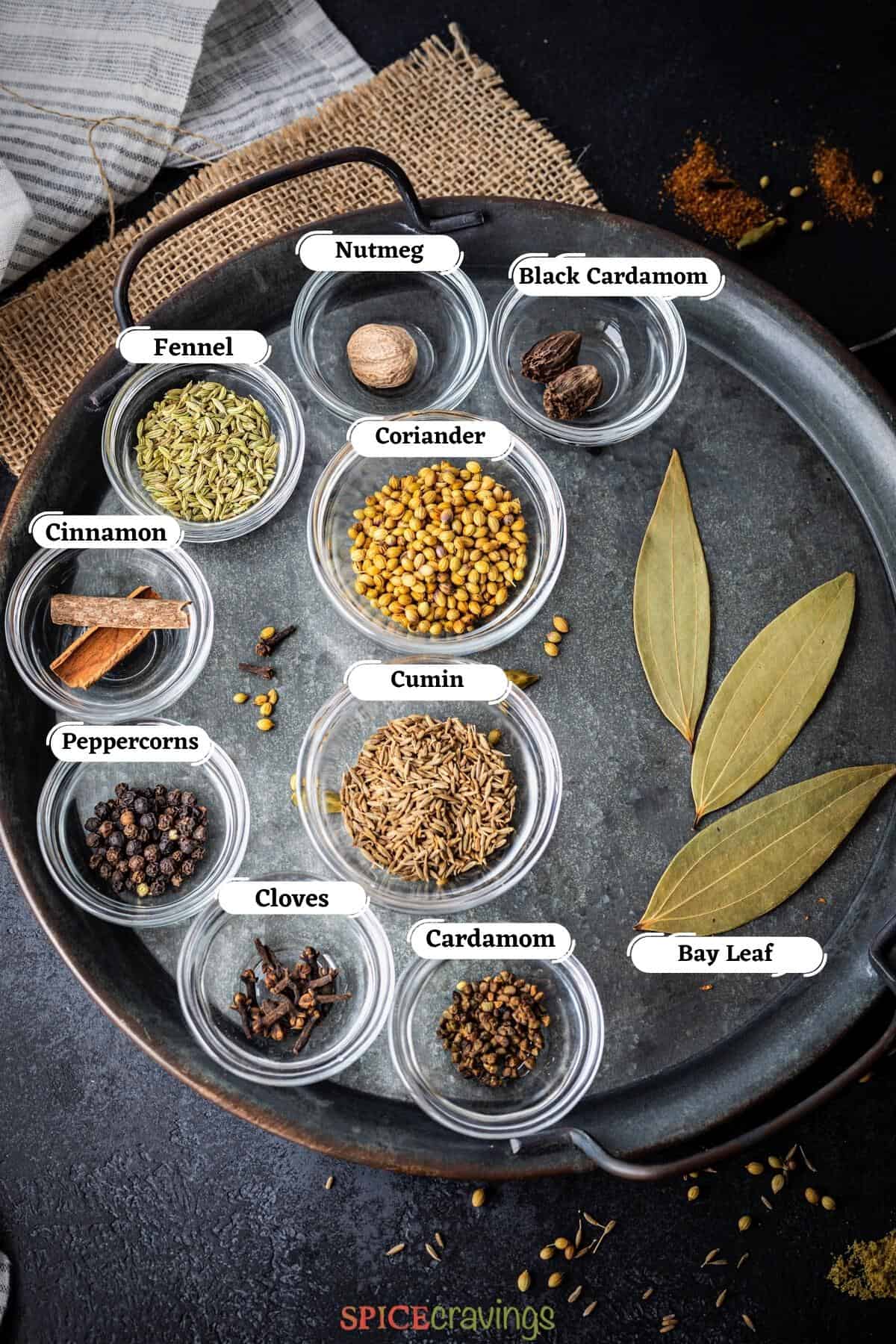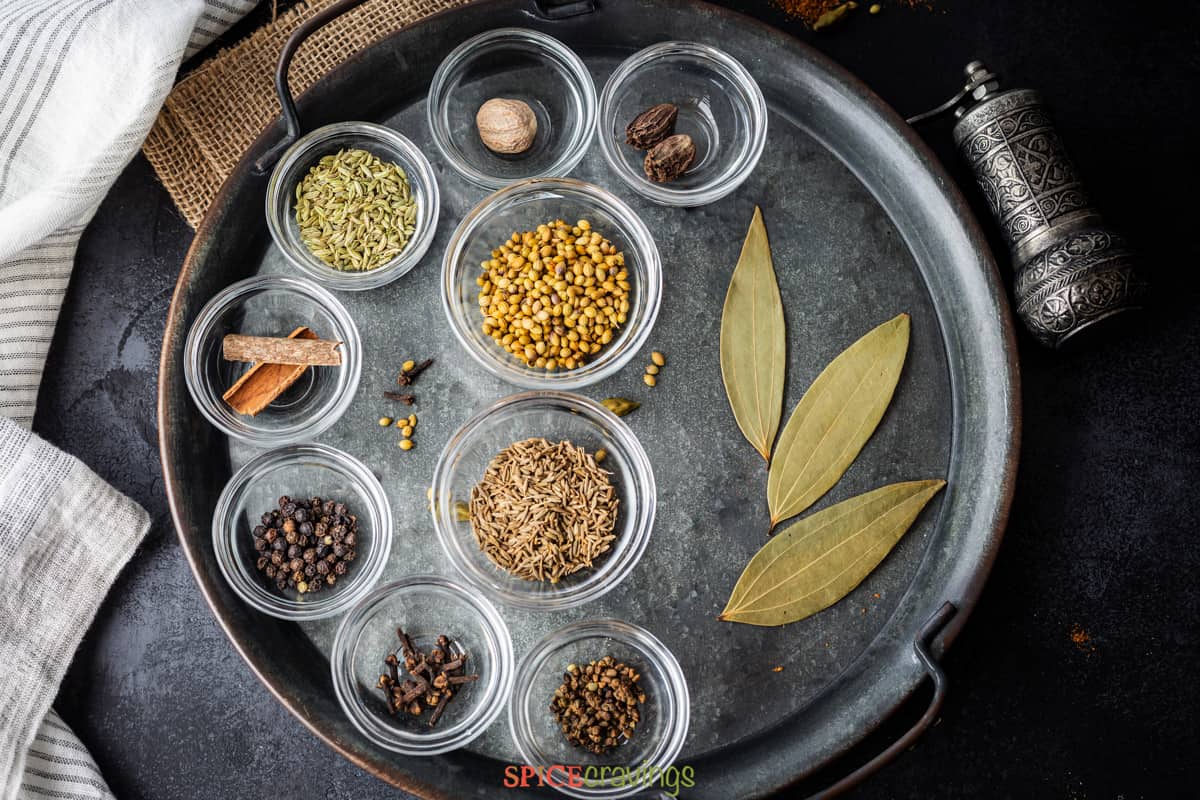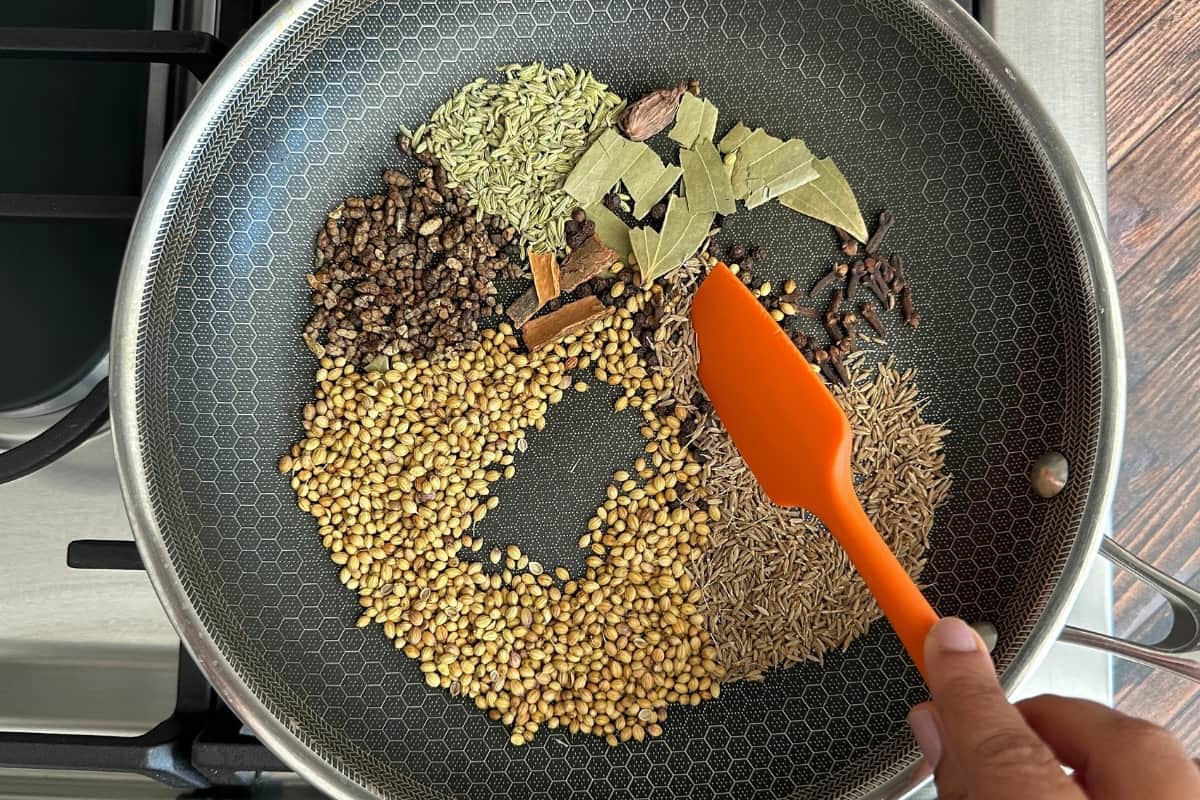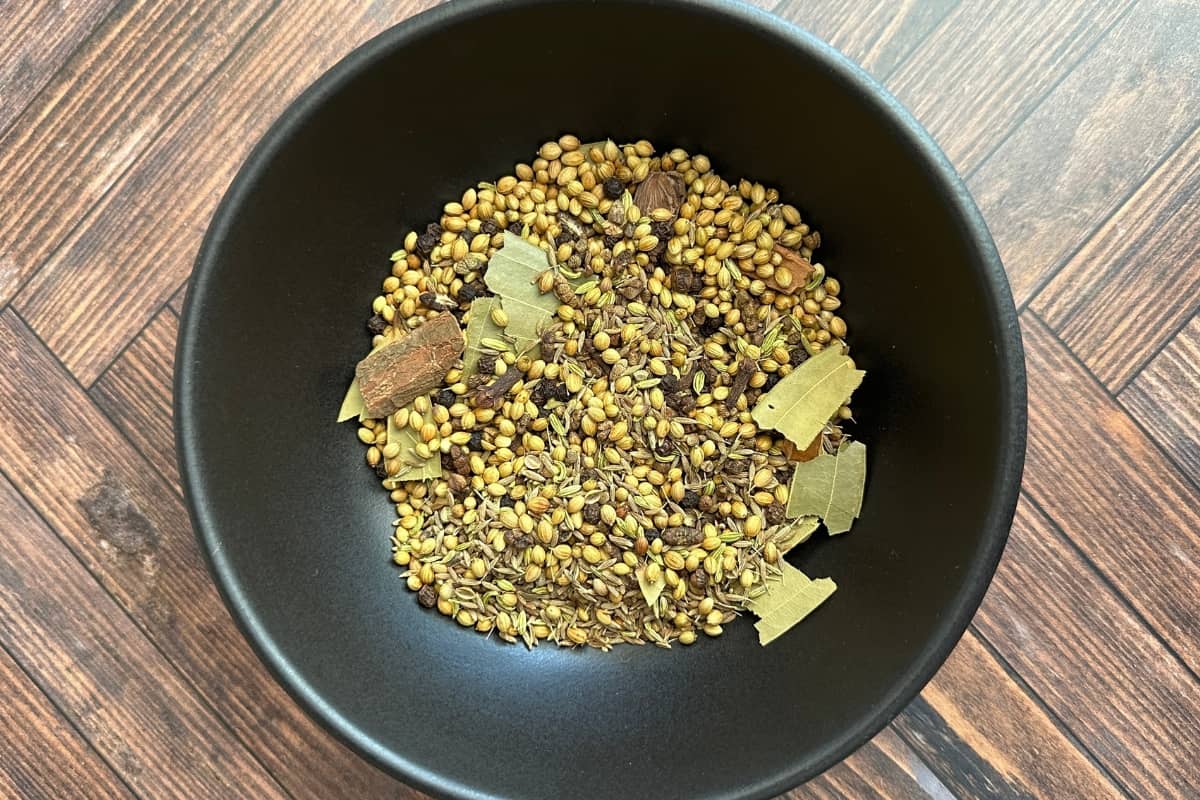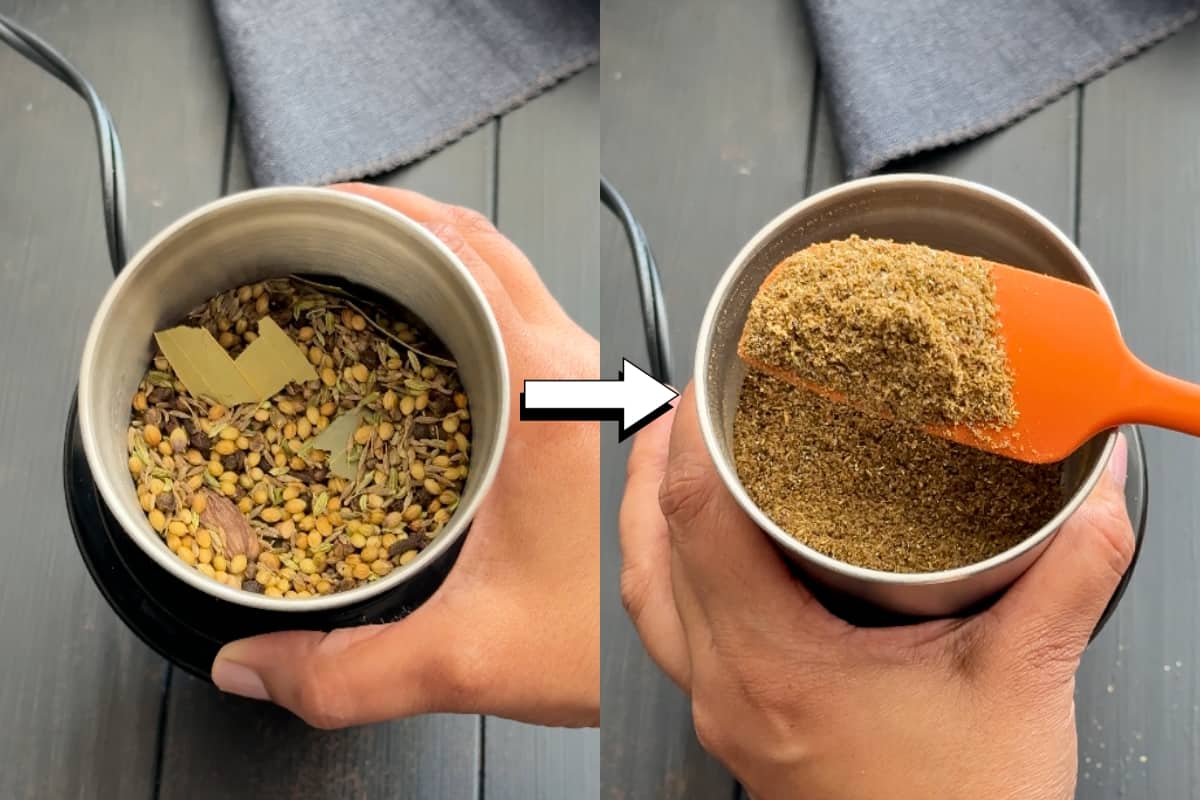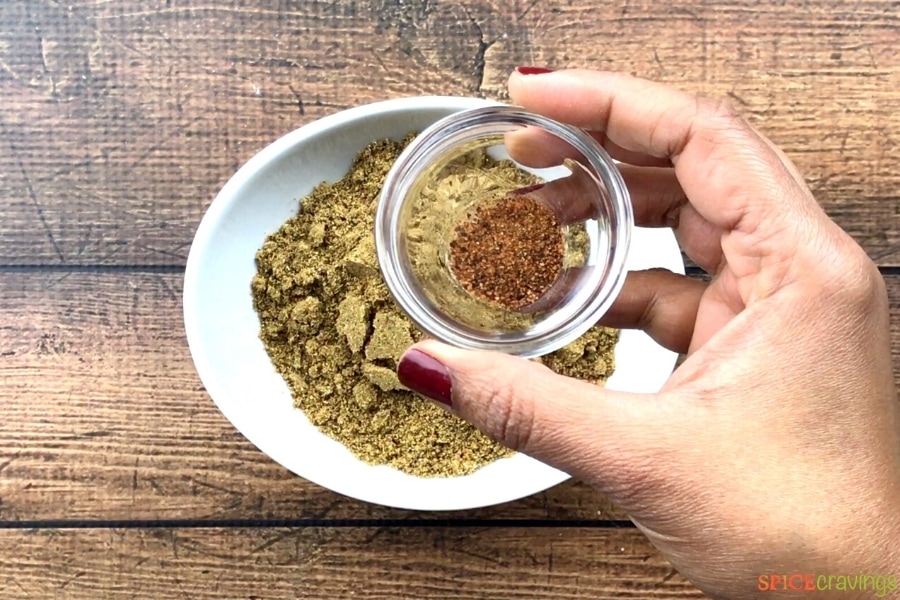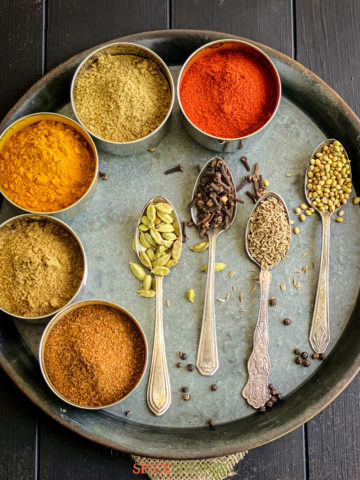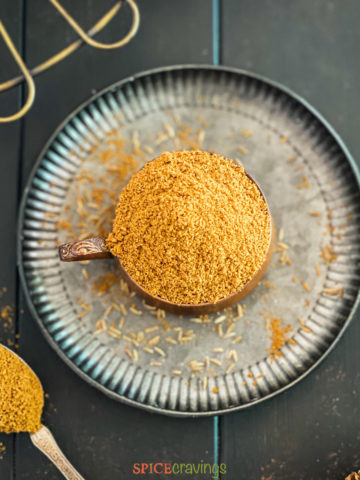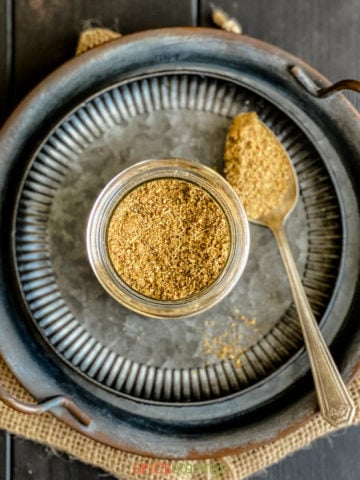For more than two decades now, I’ve been using my Mom’s simple and easy 15-minute recipe to create a Homemade Garam Masala that is far more fragrant and flavorful than any store-bought brand. She uses only 10 ingredients to create this magical seasoning.
This Punjabi-style Garam Masala powder (north-Indian) is versatile enough to be used for homestyle dals, curries, and stir-fries, like Dal tadka, Rajma, and Gobi Aloo, as well as restaurant favorites like Biryani, Butter Chicken and Korma.
What Is Garam Masala?
Garam Masala, pronounced as guh-rum muh-saa-laa, literally means warm (garam) spice (masala). It is a fragrant blend of locally grown spices from the northern region of the Indian subcontinent. It is used for its sweet and warming spice flavor, not spicy heat. Its basic composition differs by region since the climate and soil type vary all over India. Plus, almost every household has their own spin on it based on their taste preference.
Health Benefits of Garam Masala
The word garam means “to warm the body”. In Ayurveda, it is believed that when there is not enough heat in our body, our bodies can be slow to remove toxins. These warming spices are believed to increase the body temperature thereby facilitating the toxin-release. Other healing benefits of garam masala include:
Boosting immunity Promoting weight loss Aiding digestion Lowering blood sugar Decreasing inflammation
Garam Masala Ingredients
Here is a list of simple and easy-to-buy 10 whole spices that are needed for this aromatic garam masala recipe:
How to Buy Spices and Store Them Correctly
Where to buy spices? The best places to purchase whole spices are Whole Foods, Sprouts, Indian grocery stores, and online or specialty food markets that have spice bins. Here are the different spices we’re using today: I highly recommend purchasing spices in their whole form versus the pre-ground variety. Whole spices contain all of their aromatic essential oils that make a homemade spice mix so special. Even more so, whole spices hold onto flavor and aroma for up to one year. For optimal shelf life, store the whole spices in a cool, dark place (spice cabinet) and use the amount called for in the recipe. Garam Masala Substitute: A good substitute for Garam masala is Curry powder, or, combining 1 part ground cumin with ¼ part ground allspice. You can find more easy substitutes in this article: Garam Masala Substitutes.
How to Make Garam Masala
This simple masala requires a large skillet, a spice grinder, and only 15 minutes. Here are the step-by-step directions and photos on how to toast spices and grind them to make garam masala from scratch:
Gather and prepare spices: Remove any rotten pieces or dirt from all spices. Make sure to remove any clove stems without buds. Break the cinnamon sticks into smaller pieces and clean the dirt between the grooves.
Light toast: Add all spices to a large skillet and lightly toast on medium heat for 2 minutes, stirring every 20 seconds or so. When you can start smelling the aroma of spices, they are done.
Why Toast Spices? Toasting whole spices releases the oils from them, thereby releasing aroma and flavor. Once toasted and cooled, this spice mix stays fragrant and flavorful for months. Toasting also takes away the ’edge’ from the most potent spices, like cloves and cinnamon, making them more pleasant to taste in a dish.
Cool completely: Turn off the heat. Transfer to a plate to stop the roasting and cool for 10 minutes.
Grind to powder: Using a coffee grinder or spice grinder, grind the spice mix in 3-4 batches. Give it a good shake in between to prevent the spices from clumping. Grind to a fine texture.
Add nutmeg: Stir in ½ teaspoon freshly grated nutmeg to the final blend. (picture below)
How to grind spices? I highly recommend investing in a spice grinder or a coffee grinder. They’re small in size, can be stored away, and aren’t that expensive. The flavor and aroma of freshly ground spices make it totally worth it.
Reasons to Make Garam Masala at Home
Here are a few reasons why I make this spice blend at home:
Versatile seasoning: It’s a versatile spice used to flavor curries, dal, stir-fries, grilled proteins, and more. Most of my Indian recipes call for garam masala as one of the main flavoring components. (sample recipes listed below!) Convenient than whole spices: This ‘ground’ blend works as a great way to incorporate the aroma and flavor of the whole spices without having to pick them out later, or worse, accidentally biting into them. Superior quality: Nothing beats the taste and quality of homemade garam masala. Store-bought blends sit on the shelves far too long and lose their flavor. Homemade masala stays fresh for months, is more flavorful, as a result, you end up needing a smaller quantity. Quality Control & healthy: When you make this masala at home, you know exactly what goes into it. The ingredients for this spice blend are naturally vegan and gluten-free and are compatible with many diets, including keto, paleo, whole30, just to name a few.
Spices 101: To learn more about Indian spices and their usage, read this complete guide on Essential Spices for Indian Cooking
How To Use Garam Masala
In Indian cooking, garam masala is added in one of the two stages- in the curry base, or as a finishing spice after cooking. Sometimes, it’s added in both! Must-try: 20+ Delicious Indian Recipes using Garam Masala
When and how much to add?
When I add it to the curry base, depending on the dish, I typically use 1-2 teaspoons for a serving size of 4-6 people. Adding the garam masala at this stage helps the spices bloom and flavor the whole dish subtly. When I add it as a finishing spice, I stir in ¼ - ½ teaspoon 2-3 minutes before turning off the heat. This helps give a pop of flavor and aroma. I use Garam Masala in curries, stir-fries, grilled proteins and so much more. Most of my popular Indian recipes use this homemade garam masala spice blend. Here are a few of my favorites:
Tandoori Chicken Legs or Whole Tandoori Chicken Chicken Tikka, Fish Tikka or Paneer Tikka Vegetable Korma, Lamb Korma or Chicken Korma Matar Paneer or Mutton Curry Rajma or Chana Masala Chicken Biryani, Vegetable Biryani or Egg Biryani Tikka Masala Sauce or Chicken Tikka Masala Paneer Butter Masala or Butter Chicken
Recipe Tips & Notes
Clean the spices. Before starting spread the spices on a large plate and quickly sort through them. Discard any small stones or dirt. Stick with making a small batch. This recipe makes 4 tablespoons (¼ cup) of seasoning mix. You can easily scale it up based on your consumption levels. The ground spices tend to lose their flavor after a few months, which is why I always make enough for 1-2 months. Cool the toasted, whole spices completely before grinding. If the toasted spices are still warm when you add them to the spice grinder, the warmth will turn the spices into a paste rather than a powder. Store in a cool, dark place. Place the ground garam masala spices a small mason jar, label, date and store in your spice cabinet for up to 3 months. Garam Masala Substitute. If you’re in a pinch, a good substitute for Garam masala is curry powder, or, to combine 1 part ground cumin to ¼ part ground allspice. This works as a good substitute for this wonderfully complex spice mix. Store-bought Masala. Homemade garam masala beats store-bought any day. But for busier times, I always have a store-bought back-up in my pantry. I have tried many brands and find the Everest Garam Masala to be a well-balanced substitute.
More Indian Kitchen Essentials
Homemade Ghee Indian Curry Sauce Ginger Garlic Paste
More Indian Spice Recipes
📖 Recipe
